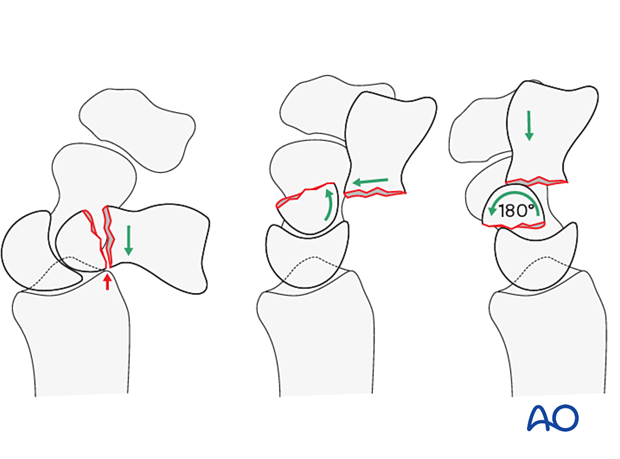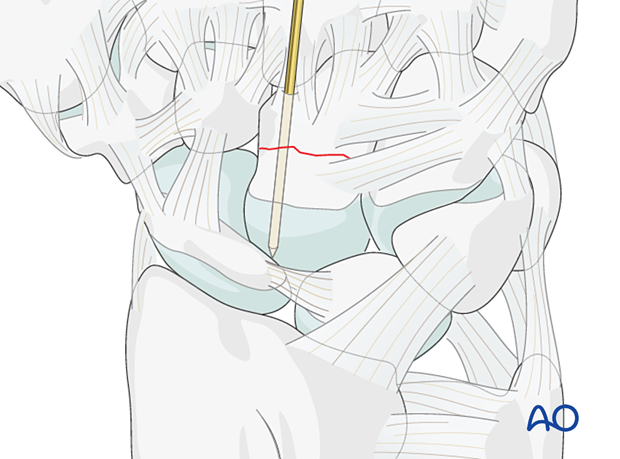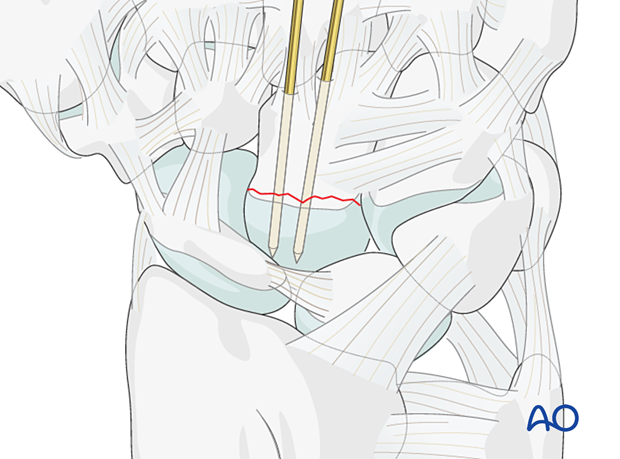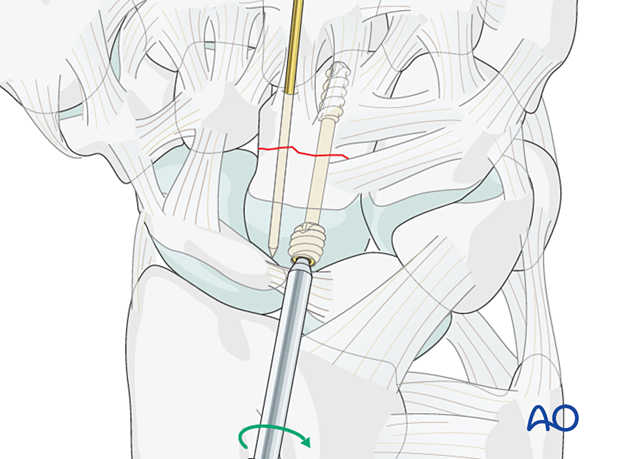Screw fixation of a capitate fracture
1. General considerations
For the fixation of capitate head and body fractures, headless compression screws may be used.
The screw is optimally inserted antegrade.
Oblique distal dorsal fractures are usually associated with carpometacarpal fracture-dislocations, and their management is dealt with in that section.

In this basic technique, associated bony and ligamentous injuries are not shown for clarity.
Choice of implant
If the proximal fragment is small, a mini cannulated, headless, self-compressing screw is used.
For large fragments, the use of a standard headless compression screw is advisable.

Fracture displacement
Check for a scaphocapitate (or ‘naviculocapitate’) syndrome. The proximal fragment of the capitate can rotate 90°–180°, with the articular surface of the head of the capitate directed distally.

2. Reduction
If the fracture is displaced, reduce it with an elevator or the K-wire joystick technique.

Temporarily stabilize the fracture with a K-wire. Avoid the planned screw track.

3. Guide-wire insertion
In case of a proximal fracture, use a retrograde screw insertion.
The distal entry point is dorsal to the 3rd carpometacarpal joint. Insert the guide wire as perpendicular to the fracture plane as possible.

If the fracture plane is more distal, insert the guide wire through the center of the capitate head.
This option is only possible if the scaphoid fracture is not fixed yet.
In either case, confirm accurate advancement of the guide wire perpendicular to the fracture plane with an image intensifier in two planes.

4. Screw insertion
Insert the headless compression screw in a standard manner.
Select a screw 2–4 mm shorter than the measured length with the appropriate thread length.

Check the final position of the screw and the capitate stability with an image intensifier.














